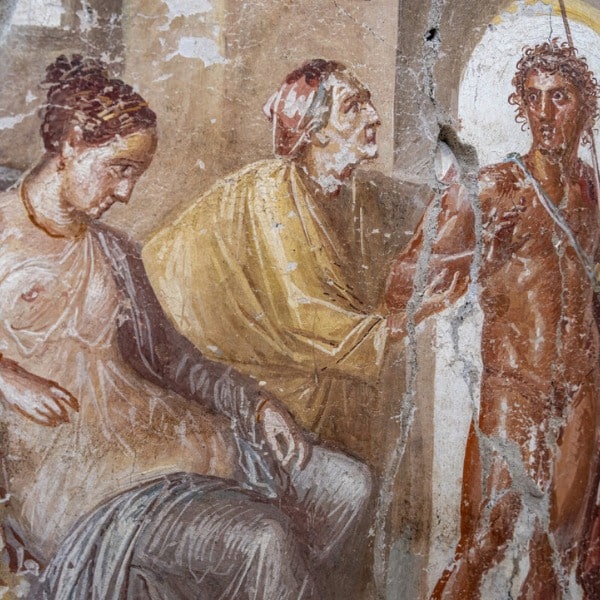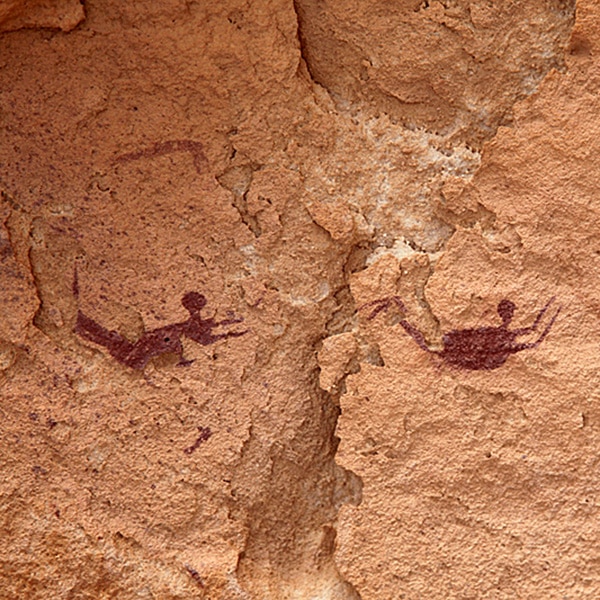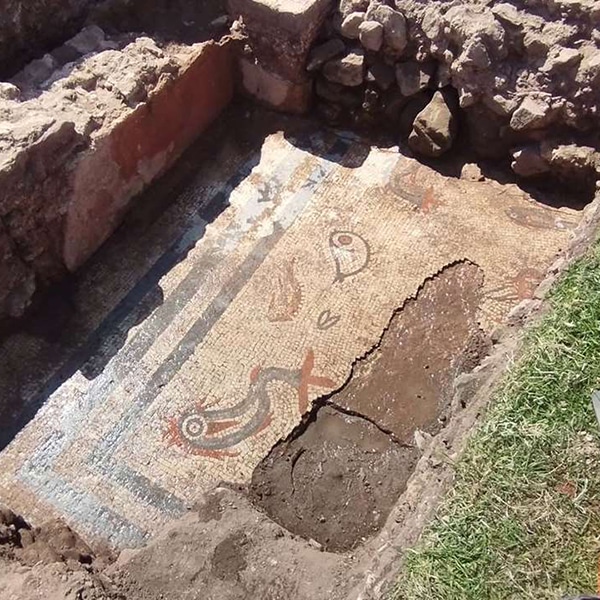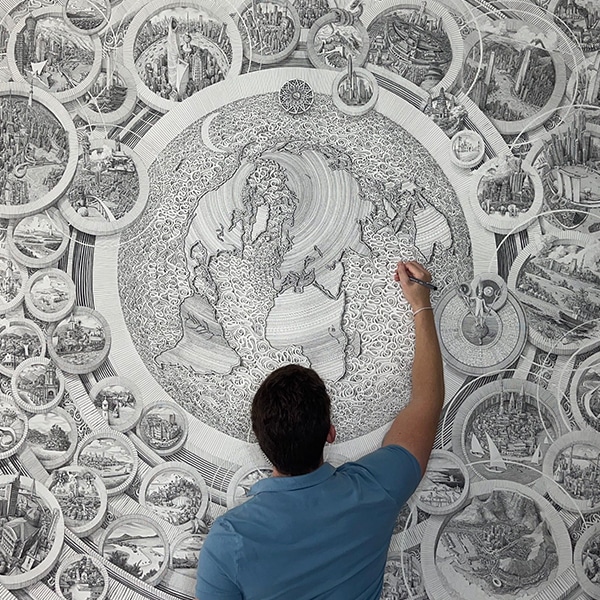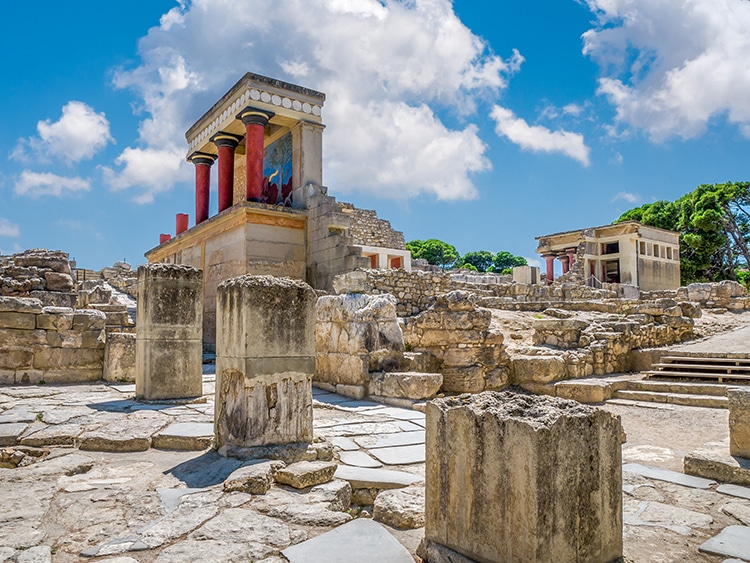
Photo: Stock Photos from IULIIA_N/Shutterstock
On the island of Crete lies the ruins of an ancient palace. Now part of modern Greece, Crete was once the center of the Aegean civilization known as the Minoans. Known for elaborate palaces and beautiful frescos, the Minoans were powerful players in the eastern Mediterranean during the Bronze Age, with trading connections to Old Kingdom Egypt and the civilizations of Mesopotamia. The Minoans are commonly described as the first complex civilization of Europe. Nowhere is the glory of Minoan culture so on display as at Knossos—a royal palace nearby the port of Heraklion, Crete.
The Minoan civilization flourished from about 3000 BCE to around 1500 BCE, eventually falling under the rule of late Bronze Age Mycenaean Greece. The first palace of Knossos was constructed around 2000 BCE. It was later destroyed in an earthquake around 1720 BCE. The rebuilt palace is what remains today—a complex of frescoed rooms, magnificent columns, and zig-zagging stairs. The palace served as the administrative and ceremonial headquarters of the Minoan realms.
The palace was built to handle a large population. Basement storage allowed for hoarding wheat, oil, and treasure. Artisans worked in quarters nearby to meet the needs of the residents. Drains, pipes, and paved roads brought the convenience of fresh water and easy travel to the rest of Crete. The Minoans also had a writing system (which developed from a hieroglyphic script to one known as Linear A) and inscriptions can be found across Minoan culture.

The throne room at Knossos, featuring frescoed walls. (Photo: Stock Photos from ANTON CHYGAREV/Shutterstock)
As a royal seat, the palace at Knossos had a magnificent throne room—thought to be the oldest intact throne room in Europe. The king sat in a gypsum stone throne which is still on view today at the site. The room also includes a stone bowl which may have been used in religious rituals. The frescos along the walls of the room depict griffins. Although the throne room may have been used by a ruler, it also may have been purely ceremonial with the throne reserved for the presence of a god or goddess.
The 1,300-room palace boasts many other frescos and painted columns; many of them have been restored in recent decades. A famous dolphin fresco is evidence of the importance of marine life to the coastal palace. Another fresco depicts a scene thought to be purposeful “bull leaping.” Acrobats would literally leap bulls—defying danger—in what may have been part of religious rituals centered around the bovines.
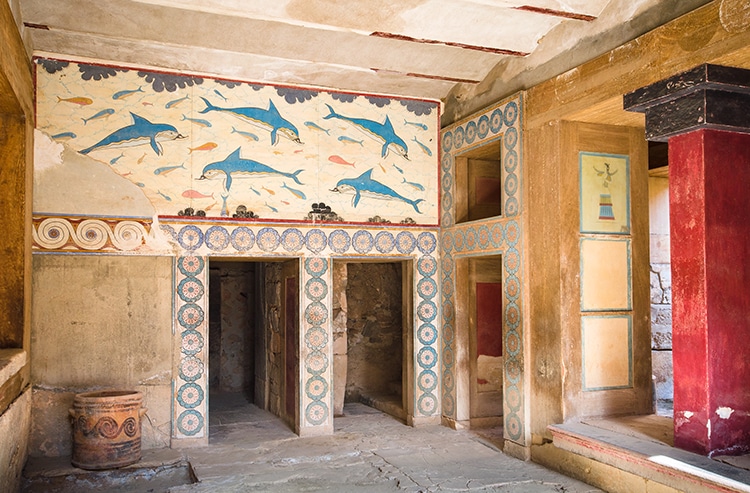
The famous dolphin fresco. (Photo: Stock Photos from GEORGIOS TSICHLIS/Shutterstock)
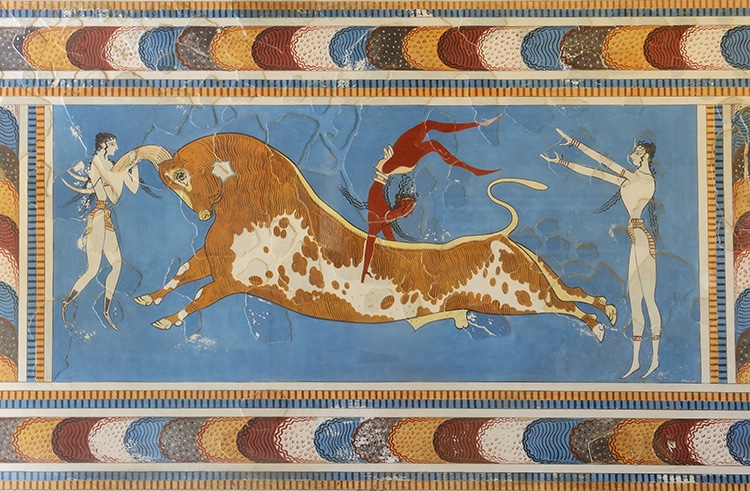
A bull-leaping scene shown in a (restored) fresco. (Photo: Stock Photos from PECOLD/Shutterstock)
The Knossos palace was destroyed by fire—potentially caused by earthquakes or the Mycenaean invasions—after 1400 BCE. The ruins were discovered thousands of years later in 1878 by Minos Kalokairinos. The site was later excavated by British archeologist Sir Arthur Evans in the first decades of the 20th century.
Today, Knossos can be visited by travelers and history buffs. Along with other Minoan palaces, Knossos is currently on the tentative list for UNESCO World Heritage Sites. The site is most easily visited from Heraklion on the island of Crete—a beautiful place known for its blue beaches and ancient wonders. Anytime you visit Crete, be sure to explore Knossos and learn more about one of the great ancient civilizations of Europe.
See more renderings and photos from the ancient Knossos—a royal palace on the island of Crete.

An artist's reconstruction of the Knossos Palace. (Photo: Mmoyaq via Wikimedia Commons, CC BY-SA 3.0)
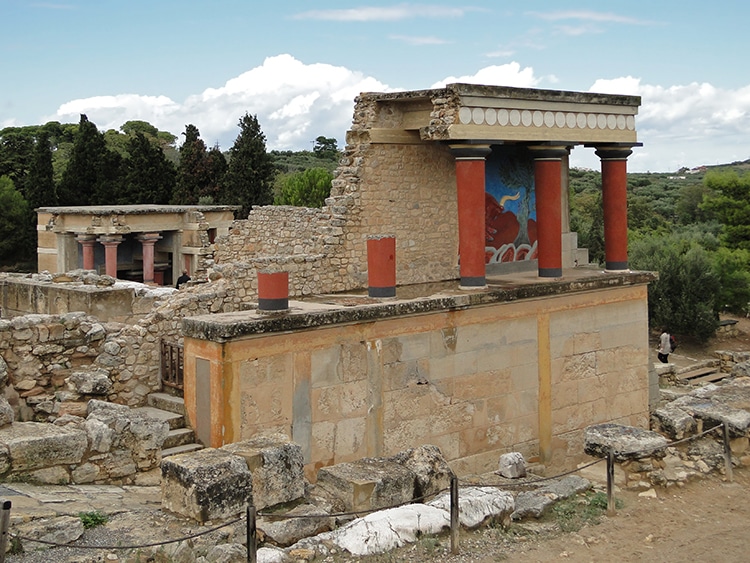
The north portico of Knossos. (Photo: Bernard Gagnon via Wikimedia Commons, CC BY-SA 3.0)

The sewers of the Bronze Age palace. (Photo: Wikimedia Commons, Public domain)
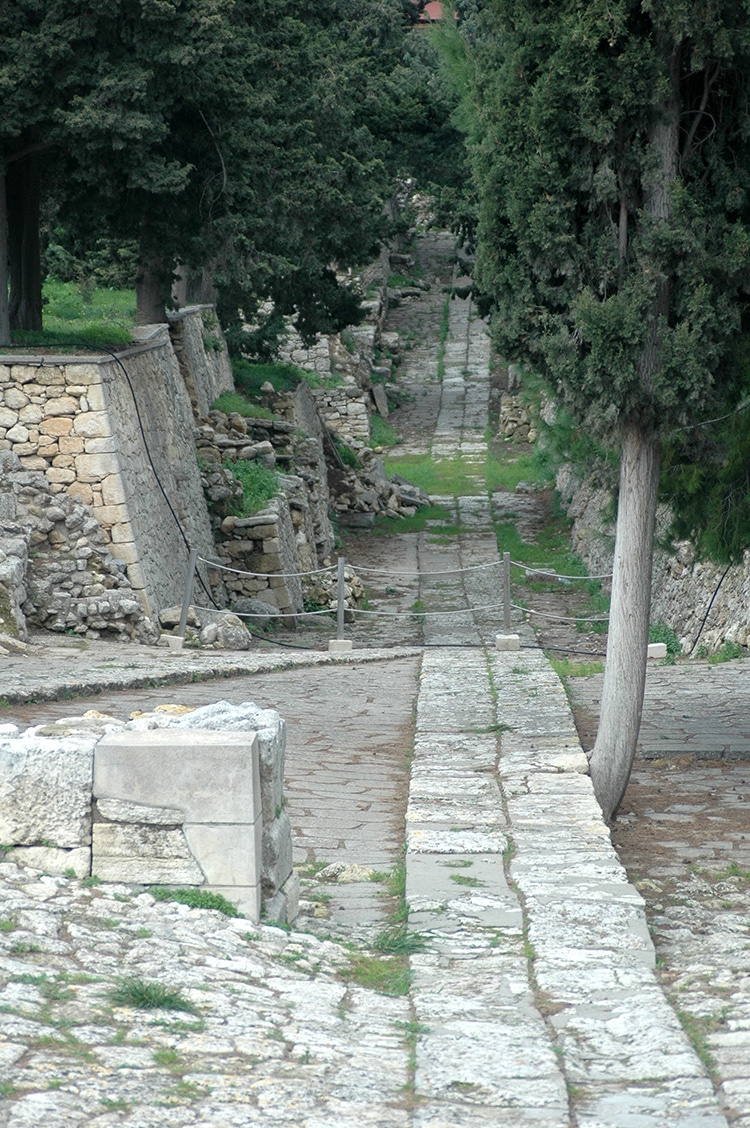
Knossos' Royal Road on Crete, Greece. (Photo: Harrieta171 via Wikimedia Commons, CC BY-SA 3.0)
Related Articles:
What Is Ancient Assyrian Art? Discover the Visual Culture of This Powerful Empire
“Lost Golden City” Discovered in Egypt Gives a Glimpse Into the Lives of Ancient Pharaohs
Drought Reveals “Spanish Stonehenge” That Had Been Hiding In a Reservoir For Over 50 Years
1,900-Year-Old Ceremonial Chariot Has Been Discovered Near Pompeii
















































































